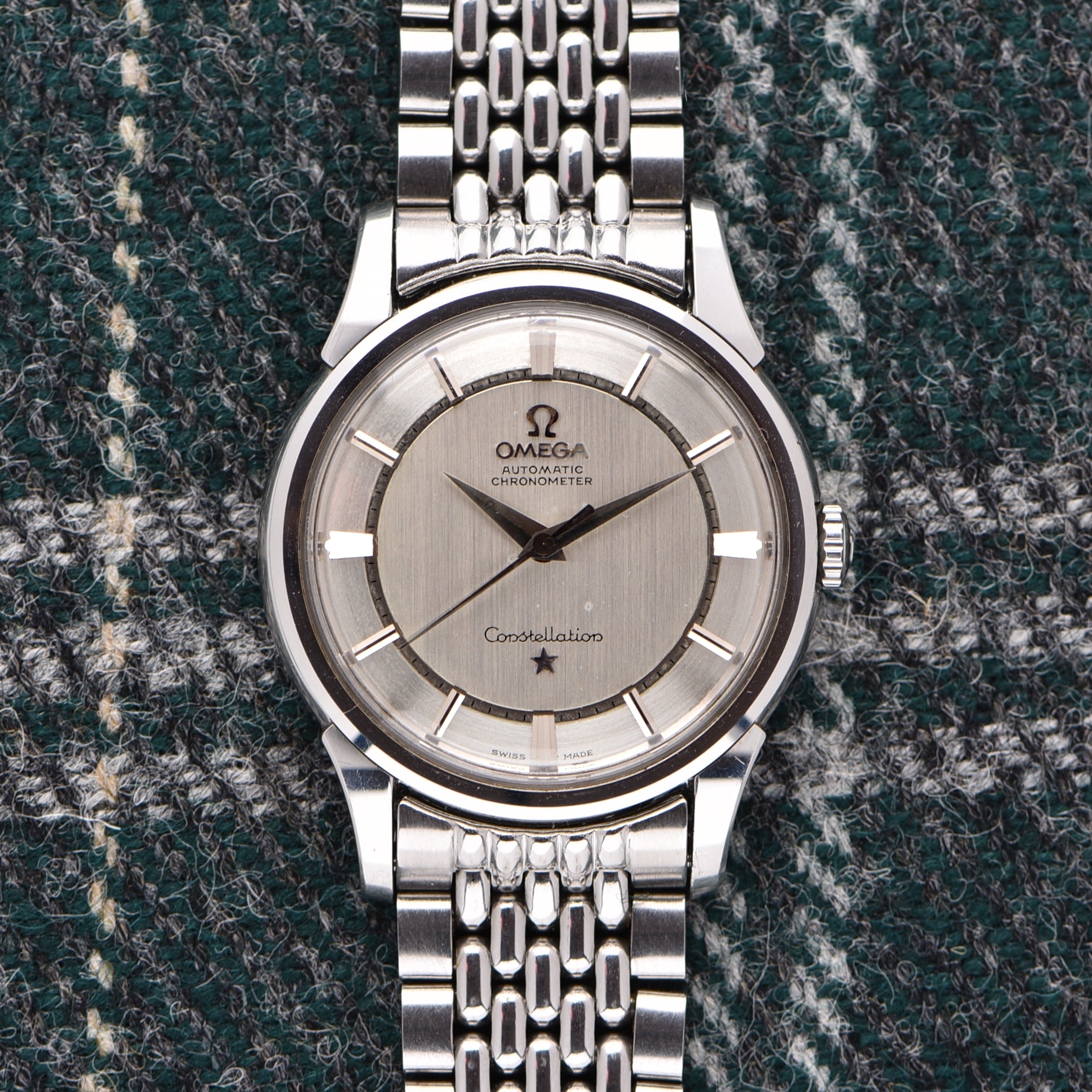

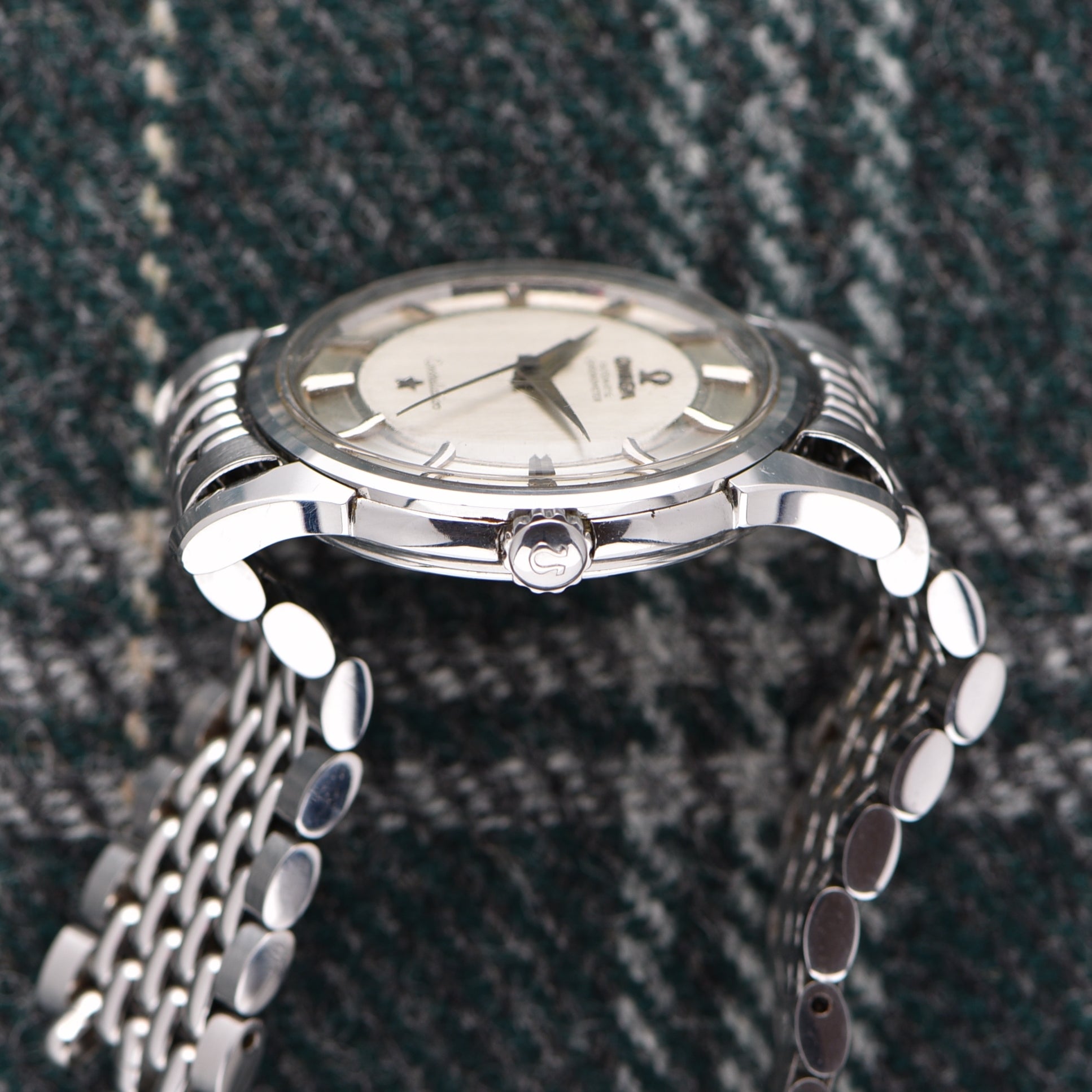
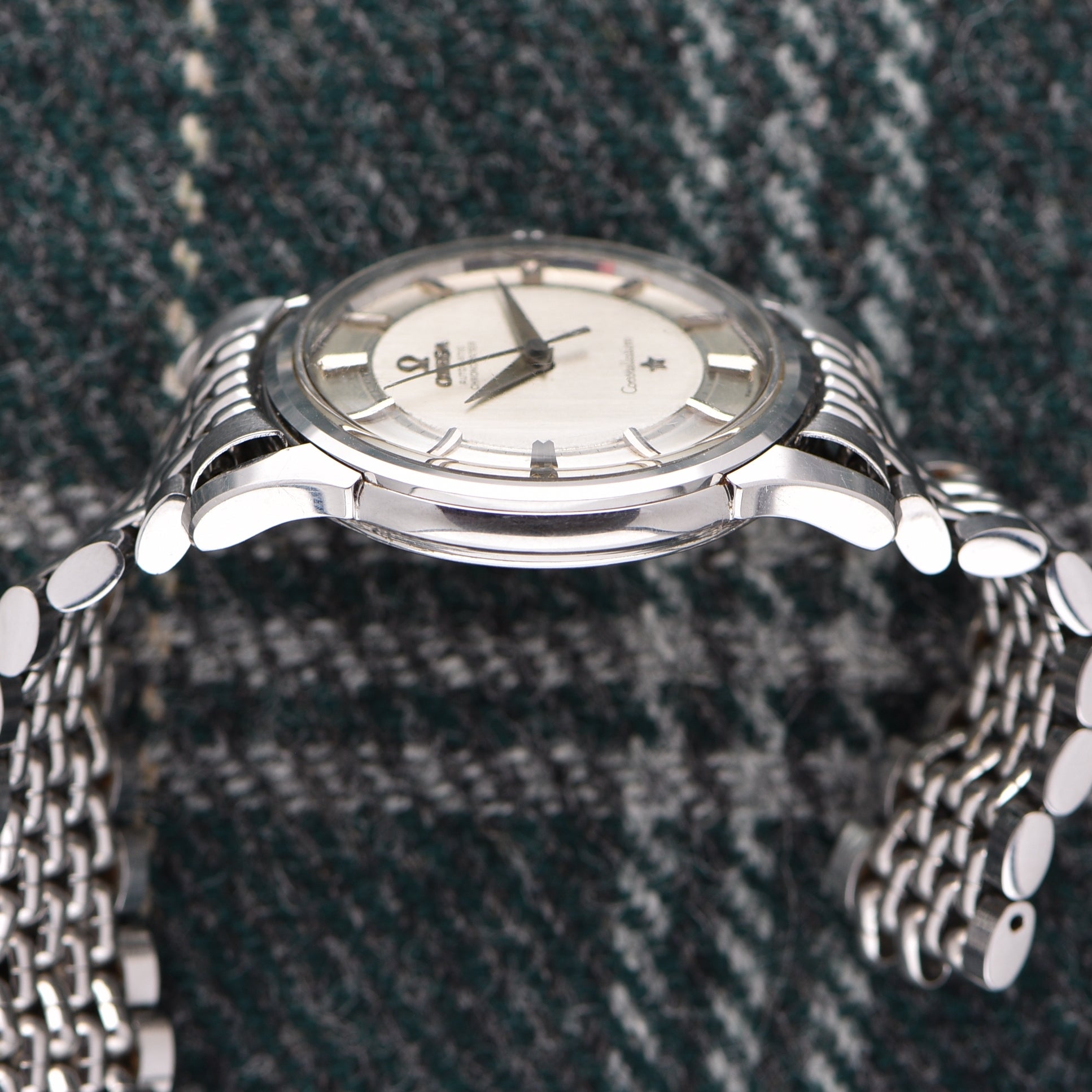
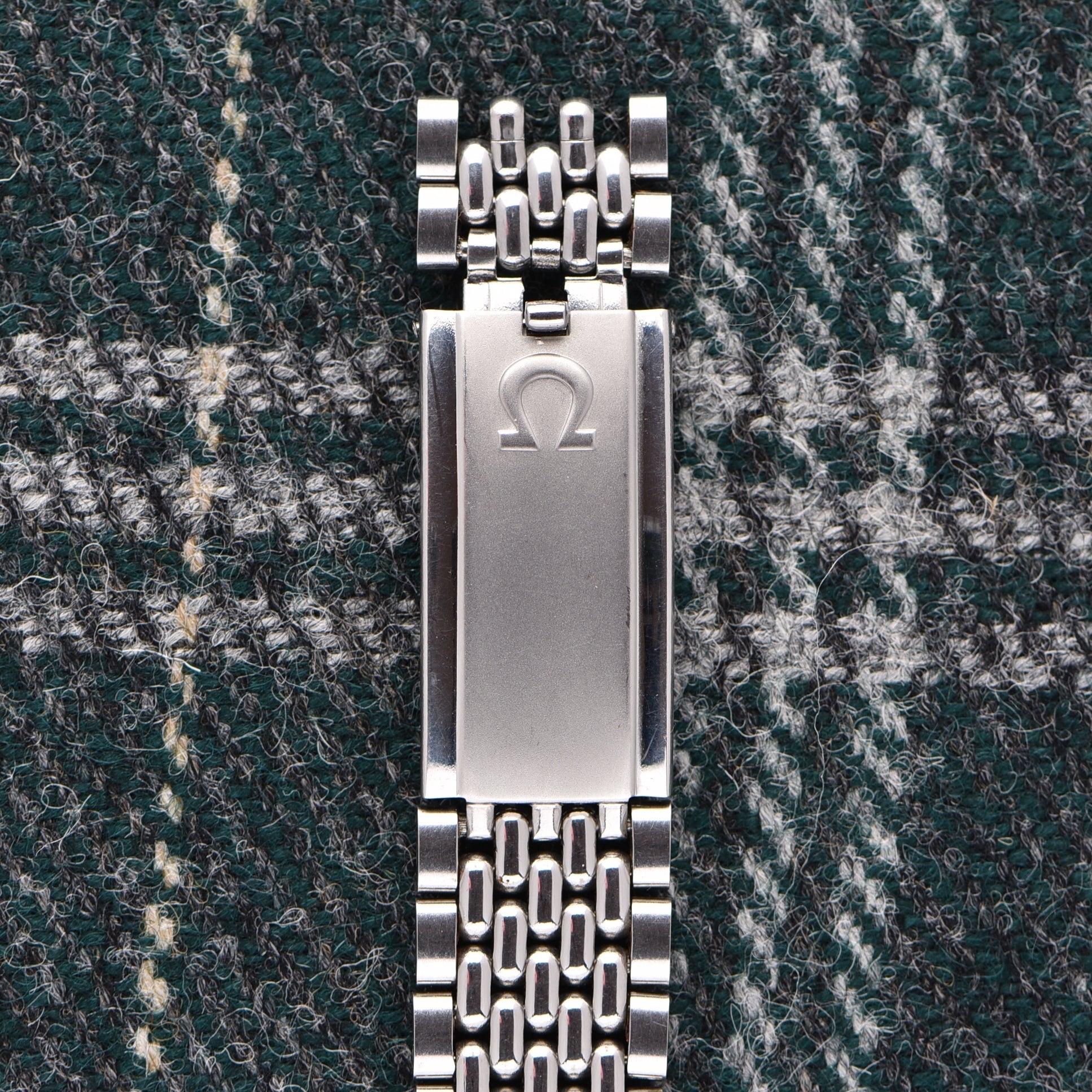

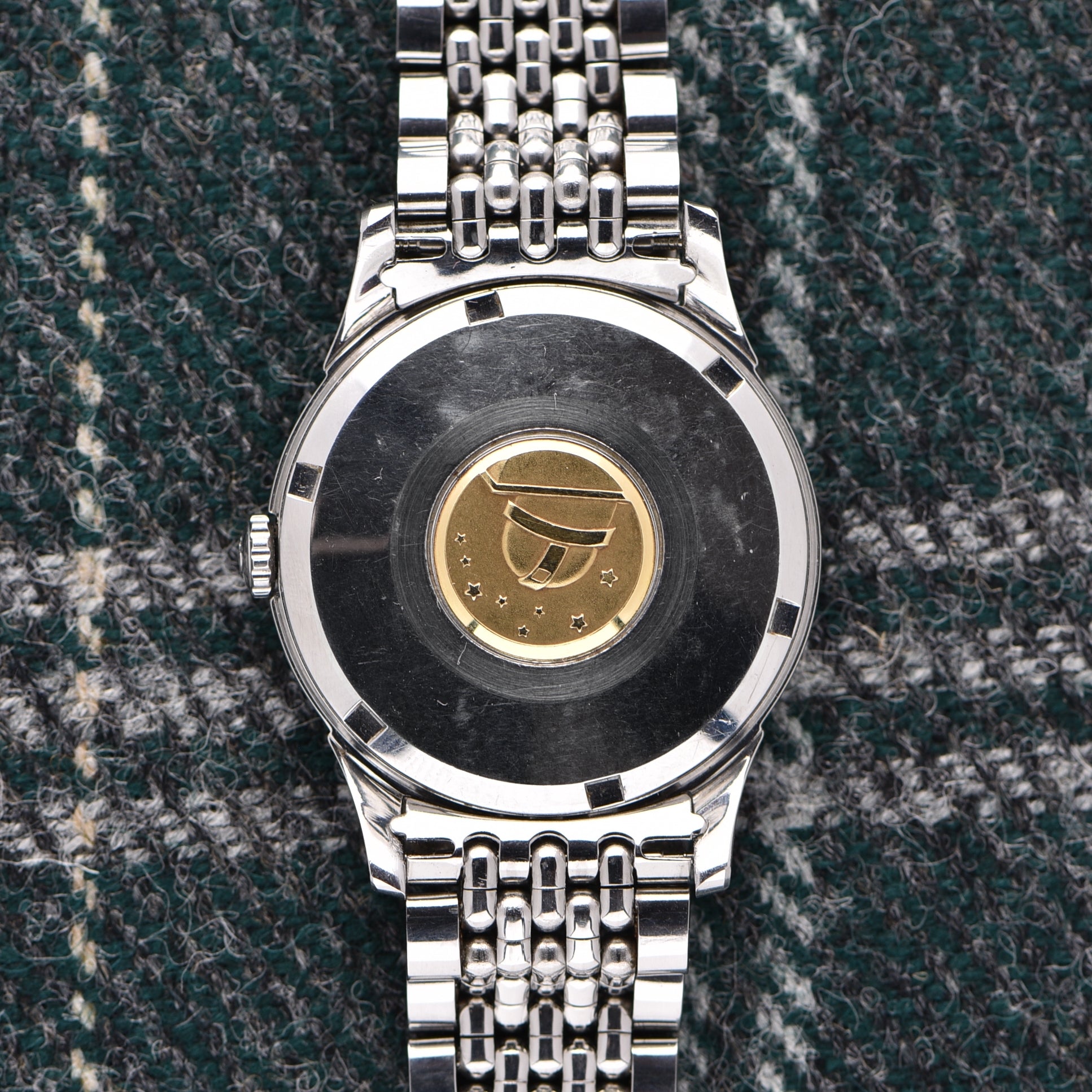
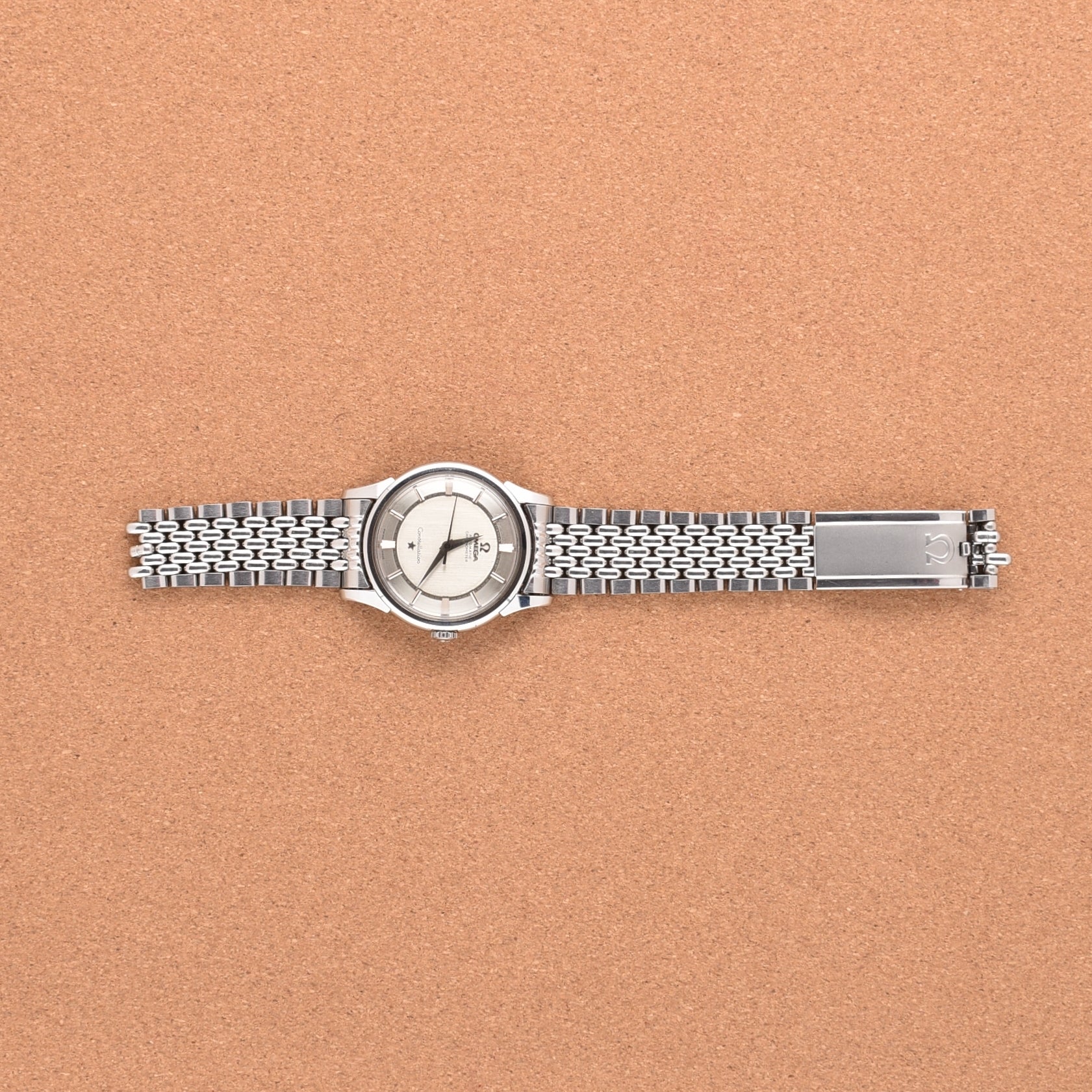
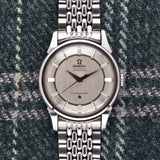
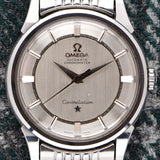
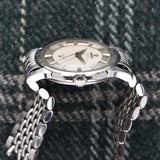
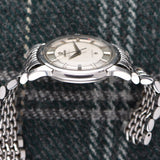
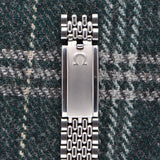
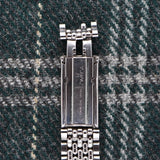
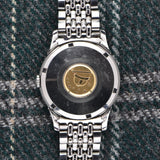
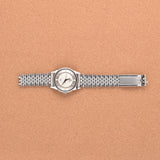
1959 Omega Constellation Railtrack Dial - Rare Clasp
- 14381-4
- Watch Only
- Wire Price $2,500
- Specifications
- The Story
- The Brand
Year: 1959
Model: Constellation
Case Diameter: 34mm
Lug to Lug: 42mm
Case: Steel
Condition: In regular, worn condition
Dial: Railtrack
Movement: Automatic winding
Condition
The case is unpolished with sharp edges. The bracelet and clasp are in great condition with the sliding mechanism still functioning perfectly. The dial has some oxidization on the minute track and a little bit of speckling throughout. The caseback is also in great condition with the gold Constellation medallion which is still unpolished and crisp.
The Constellation collection, founded in 1948, is a collection of watches that began with the Centenary, a watch designed by René Banwart. The watch was made in limited numbers, with 6,000 made in 1952. The Constellation was named after the emblem on the caseback, which showed an observatory with eight stars above it. The watch was known for its distinctive faceted convex dial, known as a "pie-pan dial." The collection evolved over the 1960s, with models featuring simpler dial designs and a wider variety of case shapes.
The Constellation also pioneered quartz watch technology, with the first commercially available quartz watch, the Astron, released in 1969. Today the line is still just as diverse, with mechanical chronometers and Master Chronometers. The collection includes a wide range of case materials and combinations, representing the latest chapter in the history of one of the longest-lived and most important wristwatch collections in the history of wristwatches.
This Constellation is for sure one of the rarer examples. Made for only a short period of time, the Railtrack dial is slightly different than the Pie-pan dials. It has a smooth surface on the outer part of the dial with no sharp edges. This example also features a rare and original bracelet clasp. The clasp features a sliding mechanism for easy adjustment, a function that is rarely seen in vintage watches. You won't find many of these bracelets anymore because they were known to break and be very fragile. This clasp is still in perfect condition and is fully functional.
We know this example was produced for the Asia Market because of the non-luminous dial and hands. This was done during that era because it was hard for watch brands to import watches into Asia with luminous material (tritium), so the non-lume dials gave them the solution to the customs regulations that were put on them.
Omega, a Swiss watchmaker founded in 1848, has a rich history of innovation and precision. The company's vision was carried on by its sons Louis-Paul and César, who pioneered full watch production under the brand's roof. In 1894, the company unveiled the world's first mass-produced, interchangeable watch movement, the Omega Calibre, which streamlined production and propelled the brand to international fame.
As the 20th century began, Omega watches became at the forefront of timekeeping technology and revolutionized sports watches with their precision. The Olympic Games provided an ideal stage for Omega to demonstrate its exceptional timekeeping abilities. In 1932, Omega began its role as Official Olympic Timekeeper, starting an enduring partnership spanning over 80 years. With each Games, Omega introduced groundbreaking timekeeping innovations, such as the first photo finish camera at the 1948 London Olympics.
Omega's contributions to spaceflight began in 1962 when the Omega Speedmaster became the first watch worn in space on Mercury-Atlas 6. Its defining moment came in 1969 with the Apollo 11 moon landing, where Buzz Aldrin stepped onto the moon wearing his trusty Omega Speedmaster Moonwatch. The company played an indispensable role in NASA's pioneering '60s space missions, including the Apollo 13 mission, where the Speedmaster timed the engine burn, ensuring the crew's safe descent to Earth.
Omega's cultural impact extends into pop culture through a long-running cinematic partnership with James Bond Movies. Since 1995's GoldenEye, James Bond has sported Omega watches on the silver screen, wearing the Seamaster Diver 300M and the rugged Omega Seamaster Planet Ocean.
Omega remains dedicated to exploring new technological frontiers today, with innovations like the battery-free Pictograms model, wearable tech collaborations, and energy-harnessing movements driving progress and cementing its place in history.
1959 Omega Constellation Railtrack Dial - Rare Clasp
Authenticity Guaranteed
All our watches are carefully inspected to insure and guarantee the authenticity.

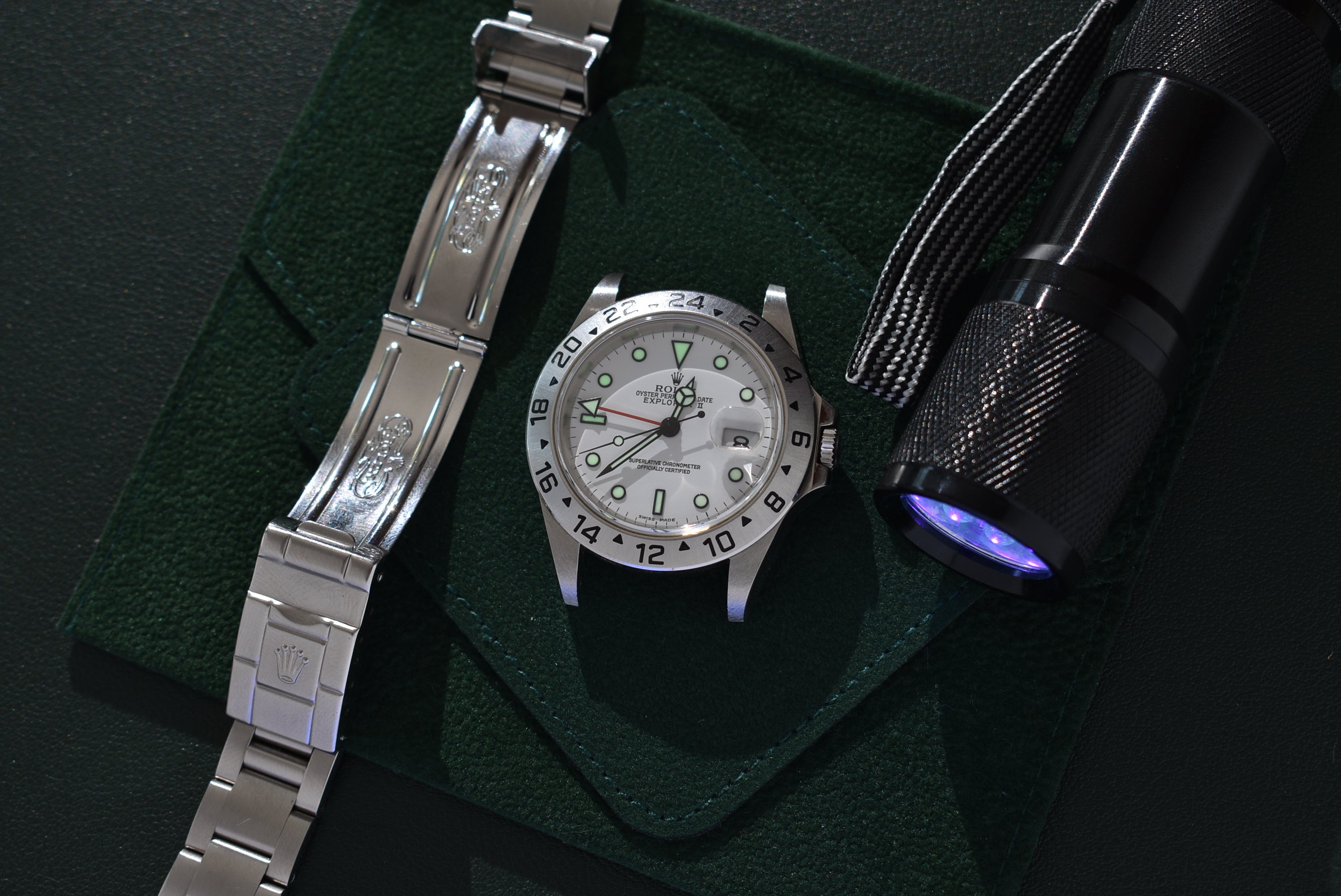
The Details
All our watches are scrutinized during inspection to make sure our descriptions are as accurate as possible.
- Related products
- Recently viewed
Cart
No more products available for purchase
Your Cart is Empty
Pair with
- 14381-4
- Watch Only
- Wire Price $2,500
- Specifications
- The Story
- The Brand
Year: 1959
Model: Constellation
Case Diameter: 34mm
Lug to Lug: 42mm
Case: Steel
Condition: In regular, worn condition
Dial: Railtrack
Movement: Automatic winding
Condition
The case is unpolished with sharp edges. The bracelet and clasp are in great condition with the sliding mechanism still functioning perfectly. The dial has some oxidization on the minute track and a little bit of speckling throughout. The caseback is also in great condition with the gold Constellation medallion which is still unpolished and crisp.
The Constellation collection, founded in 1948, is a collection of watches that began with the Centenary, a watch designed by René Banwart. The watch was made in limited numbers, with 6,000 made in 1952. The Constellation was named after the emblem on the caseback, which showed an observatory with eight stars above it. The watch was known for its distinctive faceted convex dial, known as a "pie-pan dial." The collection evolved over the 1960s, with models featuring simpler dial designs and a wider variety of case shapes.
The Constellation also pioneered quartz watch technology, with the first commercially available quartz watch, the Astron, released in 1969. Today the line is still just as diverse, with mechanical chronometers and Master Chronometers. The collection includes a wide range of case materials and combinations, representing the latest chapter in the history of one of the longest-lived and most important wristwatch collections in the history of wristwatches.
This Constellation is for sure one of the rarer examples. Made for only a short period of time, the Railtrack dial is slightly different than the Pie-pan dials. It has a smooth surface on the outer part of the dial with no sharp edges. This example also features a rare and original bracelet clasp. The clasp features a sliding mechanism for easy adjustment, a function that is rarely seen in vintage watches. You won't find many of these bracelets anymore because they were known to break and be very fragile. This clasp is still in perfect condition and is fully functional.
We know this example was produced for the Asia Market because of the non-luminous dial and hands. This was done during that era because it was hard for watch brands to import watches into Asia with luminous material (tritium), so the non-lume dials gave them the solution to the customs regulations that were put on them.
Omega, a Swiss watchmaker founded in 1848, has a rich history of innovation and precision. The company's vision was carried on by its sons Louis-Paul and César, who pioneered full watch production under the brand's roof. In 1894, the company unveiled the world's first mass-produced, interchangeable watch movement, the Omega Calibre, which streamlined production and propelled the brand to international fame.
As the 20th century began, Omega watches became at the forefront of timekeeping technology and revolutionized sports watches with their precision. The Olympic Games provided an ideal stage for Omega to demonstrate its exceptional timekeeping abilities. In 1932, Omega began its role as Official Olympic Timekeeper, starting an enduring partnership spanning over 80 years. With each Games, Omega introduced groundbreaking timekeeping innovations, such as the first photo finish camera at the 1948 London Olympics.
Omega's contributions to spaceflight began in 1962 when the Omega Speedmaster became the first watch worn in space on Mercury-Atlas 6. Its defining moment came in 1969 with the Apollo 11 moon landing, where Buzz Aldrin stepped onto the moon wearing his trusty Omega Speedmaster Moonwatch. The company played an indispensable role in NASA's pioneering '60s space missions, including the Apollo 13 mission, where the Speedmaster timed the engine burn, ensuring the crew's safe descent to Earth.
Omega's cultural impact extends into pop culture through a long-running cinematic partnership with James Bond Movies. Since 1995's GoldenEye, James Bond has sported Omega watches on the silver screen, wearing the Seamaster Diver 300M and the rugged Omega Seamaster Planet Ocean.
Omega remains dedicated to exploring new technological frontiers today, with innovations like the battery-free Pictograms model, wearable tech collaborations, and energy-harnessing movements driving progress and cementing its place in history.
